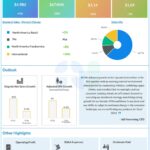SBI Research, in its latest ‘Ecowrap’ report, noted that the net financial saving of the household sector – the most important source of funds for the two deficit sectors, namely, the general government sector and the non-financial corporations – moderated to 5.1 per cent of GDP in FY23 from 11.5 per cent in FY21 and 7.6 per cent in FY20 (pre-pandemic).
“It has been said that it fell to 50 year low, however this is completely misleading as household savings must be looked into as a sum total of physical and financial savings. Financial liabilities jumped Rs 8.2 trillion since pandemic, outpacing the increase in gross financial savings at Rs 6.7 trillion, thus explaining the fall in household net financial saving by Rs 1.5 trillion/2.5 per cent of GDP. On the asset side of households, there was an increase of Rs 4.1 trillion in insurance and provident and pension funds,” the report said.
On the liability side of households, out of Rs 8.2 billion increase, Rs 7.1 billion was accounted for by increase in household borrowing from commercial banks.
“Juxtaposing this increase in borrowing from commercial banks with the increase in bank credit, we find that 55 per cent of the retail credit to households in the last 2 years have gone to housing, education and vehicle purchase,” the report added.
This indicates that the shift from financial savings to physical savings was also triggered by a low interest rate regime in the last two years.
The decline in net financial savings of households has resulted in a concomitant increase in household savings in gross physical assets. In fact, savings in physical assets which accounted for more than two-thirds of household savings in FY12, had declined to 48 per cent in FY21. However, the trend is again shifting and the share of physical assets is expected to reach 70 per cent level in FY23, due to decline in share of financial assets.
“We believe that the total household savings (both financial+physical) for FY23 would still surpass the FY22 levels despite the decline in financial savings as household savings in physical assets has jumped Rs 6.5 trillion in FY22 over FY21 and as per current trends it is expected to jump further by upto Rs 5 trillion in FY23 and hence will outstrip the increase in household indebtedness,” the SBI Research report noted.
“We also believe that the shift to physical assets is also triggered by a recovery in real estate sector and the increase in property prices. The RBI House Price Index shows a modest acceleration since FY21, which may be acting as a motivator for buying homes. This increased “pull” factor thereby pushing up capital spends in a multitude of sectors. If this is indeed the proximate story of the revival in household investment, this has strong policy implications for growth and investment revival,” it said.
Also Read: India gets WFME accreditation, medical students can now practice in US, other countries
Also Read: US supports probe into killing of Sikh separatist leader, urges India to ‘fully cooperate’








